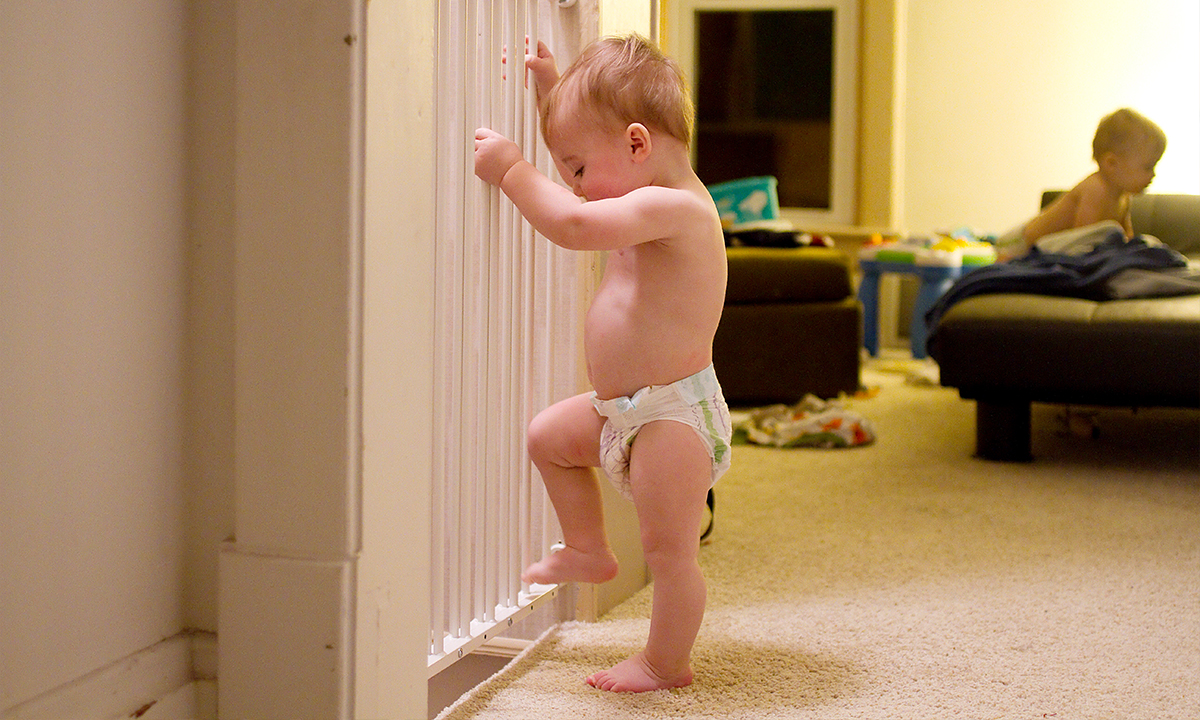
Your little infant is cute, precious, and apart from the usual tear fest, not a problematic creature to manage. However, your infant is not going to remain an infant forever. As soon as your baby makes the transition to a certified toddler, that’s where things start to get a tad bit harder. Toddlers simply love to roam around, explore, and stick their fingers into virtually everything that is accessible to them. A toddler’s curiosity is one of the most precious things about humanity. However, the fun would come to a screeching halt as soon as they start discovering hot ovens, stairways, cupboards, cabinets, and other potentially hazardous household items that could reward their curiosity with pain, injury, or worse. Be it your toolshed, your cleaning products, or something as harmless as an indoor pond. Your baby has a natural tendency to feel, smell, touch, and observe each and everything in their path.
As a responsible parent, the important thing is not to let your baby’s curiosity cause them any harm. This is the point at which a baby safety gate becomes a necessity in your home.
What is a Baby Gate?
A baby gate is a small gate that is specifically designed to block off potentially hazardous areas to keep your baby confined within a safe and secure place that has no potential to cause them any physical harm. Baby gates are typically constructed of metal, plastic, and/or wood and can be expanded to fit in a range of doorway widths. They are designed to fit your doorways, hallways, and extra-wide spaces and are equipped with a child-proof latch.
Well then, buckle up because we are about to lay down a list of things that you should consider when you are out scouting for the perfect baby gate for you as well as a helpful list of top baby gate brands available in New Zealand.
Baby Gate Fundamentals
-
Type of Gate:
Barrier gates for babies are divided into two types:
- Hardware, wall-mounted safety gatesare used to seal off high-risk areas such as stairs, fireplaces, and kitchens by screwing directly into a solid wall or wood post. These gates are the safest to use since they are more secure and do not have a crossbar at the floor level (a nasty trip hazard). These gates allow you to quickly release or remove the gate for events or between babies, and they’re also ideal for grandparents.
- Pressure-mounted safety gatesare simple to install and dismantle. Between two solid wall surfaces, the gate is tightened. These operate well in solid wood doorways, but they cannot endure the same amount of pressure as metal, wall-mounted gates. If you are a renter who cannot draw marks on the walls, you may benefit from pressure-mounted gates. Just keep in mind that they feature a crossbar running down the floor that is a potential trip hazard and must be put at least 1 meter away from the very first step of the stairway.

-
Height of the Gate
To prevent any accident that may occur, your baby safety gates should be a minimum of 60cm tall and at least three-quarters the height of your toddler.
-
Size of the Gate
Gates come in a variety of shapes and sizes, and you may need to purchase extensions to make your gate fit according to your specifications and requirements. Make sure you have precise measurements and that you understand what extensions are available and how far they extend.
-
Slat Space
Gate slat openings must be between 50 and 95 mm to prevent babies from forcing their heads through. (Yes, this is a common occurrence) There should be no places where a child’s head or torso can become entrapped. As time passes by, you would notice that toddlers carry within themselves a surprisingly decent knack for amateur mountaineering. They enjoy climbing over anything that is accessible for them, so gate slats must always be vertical to prevent them from sustaining a nasty bump.

-
Latch Mechanism
The perfect latch for you to purchase is one that you can operate correctly and efficiently and one that is simultaneously impossible for your toddler to operate. Consider the different scenarios within the day that might cause difficulties for you. For example, is it possible to open it with one hand while holding a baby or a laundry basket?
We recommend that you consider dual-action latches, which require a downward push before swinging the door open, or locks that require a squeeze or pull. Climbing over a safety barrier is never a clever idea, especially if you’re holding your baby.
-
Suitability for Stairs
Some gates are equipped with a horizontal bar that crosses the floor under the gate, causing tripping hazards while the gate is open. When you are installing a baby gate at the top of the steps, never employ a safety gate with a horizontal bar across the floor. (Ensure that it is at least 1m away from the first step).
We have prepared a comprehensive list of the best baby safety gates available in New Zealand. Simply scroll down and pick what best suits you!

Disclaimer: We did our best to investigate the most popular safety gates on the market, but we have not individually tested each gate and thus cannot make any guaranteed safety claims. Ensure that the gate you select complies with current New Zealand Standards before purchasing. We recommend that you refer to independent reviewers such as CHOICE, which follows a system basing their test procedures on various existing Australian standards for similar children’s products such as cots, folding cots, and toys. They also draw upon elements of overseas standards, including the European standard EN 1930:2011. You may refer to their reviews on various brands available in Australia and New Zealand via https://www.choice.com.au/babies-and-kids/children-and-safety/child-safety-devices/articles/how-we-test-safety-gates.

Leave a Reply